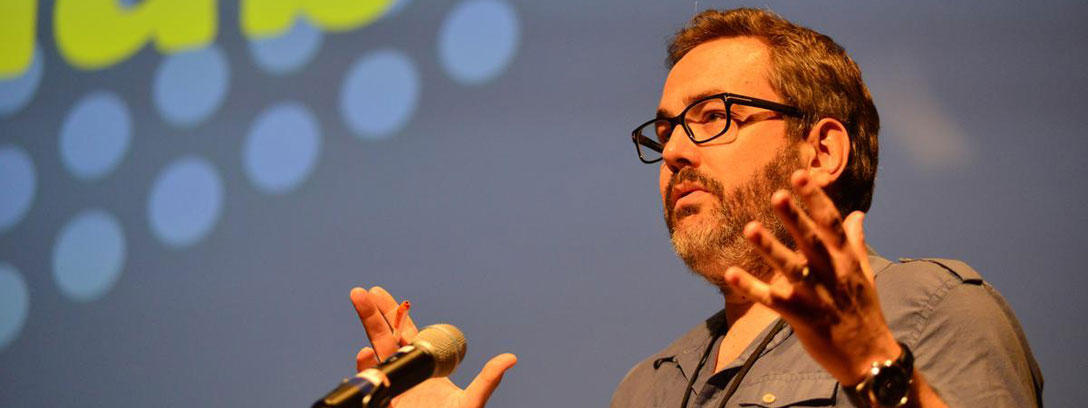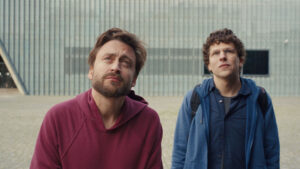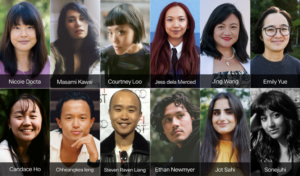Jeff Malmberg at the 2015 Doc Edit Lab
©2015 Sundance Insitute | Jonathan Hickerson
Jeff Malmberg
Arriving at the Sundance Institute Documentary Edit & Story Lab as an advisor on my first day, fellow advisor and editor Kate Amend greeted me with a hearty, “Welcome to paradise.” She said it in a way that seemed to reference more than just the beautiful surroundings.
I didn’t know exactly what she was alluding to, but I had heard this kind of thing many times before. For years, filmmakers that I greatly respected and who were not generally prone to hyperbole had been throwing around terms like “life-changing” and “magical” when it came to the edit lab. I assumed it had something to do with the drink in their hands, but then I’d notice that far-off look in their eyes and that tone of voice like they were telling me a secret and I couldn’t be quite sure.
That’s probably why when an email came in offering me an advisor position for this year’s lab—having never been involved with it before—I immediately said yes. Did I have a free week in my own editing schedule to give advice and wander the hills of Utah? Not really. But the opportunity to finally see what everyone had been talking about seemed too good to pass up.
I didn’t have to wait long. On the first night, the advisors were tasked with presenting openings of films that we found meaningful in some way. Several of the projects would be working on their openings that week and this was a chance to have a conversation about what makes for a great opening to a documentary.
I was excited to show my clip. The first four minutes of Kazuo Hara’s Goodbye CP are a fascinating example of lightning-fast empathy creation, and I hoped it would inspire a good conversation among the lab participants. And it did. But after I was done, longtime advisor Victor Livingston (and an editorial hero of mine for Crumb) screened an early version of an opening he’d once cut that he felt didn’t work.
He discussed his frustration with it and how he felt like he’d failed, but he promised that later in the week he’d show us how he’d fixed it. Once that idea of failure was introduced, the discussion in the room instantly shifted to something much more honest and productive. That acceptance of failure as part of the creative process would continue throughout the week and was for me the biggest key to what makes the lab work.
Getting to know the filmmaking teams, I was struck not only by their talent and the strength of their projects but also by how many of them felt beaten down by the road they’d travelled on the way to the lab. Pitch forum competitions, crowdfunding campaigns, and audience engagement strategies are fundamental parts of the process for a lot of filmmakers these days, but they don’t necessarily help make better films.
So to watch directors and editors be given a supportive, safe space to take off that armor and experiment and fail on the way to discovery was as inspiring as seeing them rise to the challenge. In a few cases what the teams discovered about their projects would have probably taken them months in their edit rooms back home. And I think in some cases the teams found out things about their films at the lab that they might never have found out otherwise.
As the week went on, I attempted to incorporate this “safe place to fail” mentality into my role as an advisor. By the time my 90-minute advisor presentation arrived, something that I’d initially viewed with a touch of dread had turned into a chance to open up about my very private and homegrown filmmaking process.
It became a springboard to discuss how we treat and collaborate with our subjects, the kind of portraits we owe them, and what they’re actually getting out of the documentary process—topics that I feel strongly about, but don’t have all the answers to. I saw our discussion resonate with a few of the filmmakers at the Lab, and I even walked away with a few new insights into my film.
Immediately following my presentation, one of the fellows felt compelled to call their subject and have a long conversation that sounded both difficult and overdue. What they learned during the call deepened a lot of their film, but it also called into question other aspects. How that new information will ultimately find its way into the finished film isn’t clear to them yet, but it appeared to provide entry into a new level of understanding. That kind of bravery on behalf of the filmmaker is something that the lab seems to foster.
As someone said at some point (and because I can’t quite remember who it was, I’m assuming this observation occurred very, very late at the Owl Bar—a key aspect of the lab to be sure and a blog post in itself), “You don’t come to the lab to get your film done, you come to the lab to get your film undone.”
I left for home with some new editorial compatriots, pages of scribbled notes for my own film, and a renewed sense of the kind of place I wanted my edit room to be. And, yes, the feeling that the lab had the potential to be both life-changing and magical.
Quick note on the surroundings at the lab: they are indeed, as Kate mentioned, paradise. Coming from Los Angeles, though, it all felt at first like either a gigantic film set or some sort of theme park version of something “beautiful” to be “taken in and appreciated.” By the third day, I realized they were indeed something beautiful that should be taken in and appreciated—no quotes required at all.
And by the fifth day, I had managed to integrate that beauty into the process of the lab itself. Director James Demo and I had meaningful conversations along a river while pausing to watch hawks circle above us; fellow advisor Shannon Kennedy and I dangled our feet on the chair lift while comparing editing tips; and editor Erin Casper pretty much saved my life on the hike to the falls. (Thank you, Erin—I will wear shoes with more traction next time.)
Jeff Malmberg is a documentary filmmaker in post-production on a film titled Teatro. He directed and edited Marwencol, released in 2010, which was later made into the 2018 drama Welcome to Marwen.




